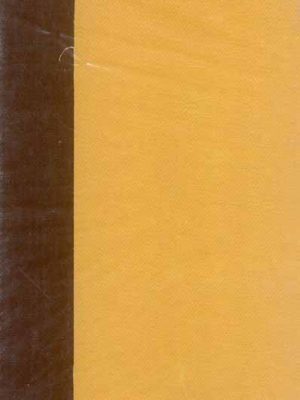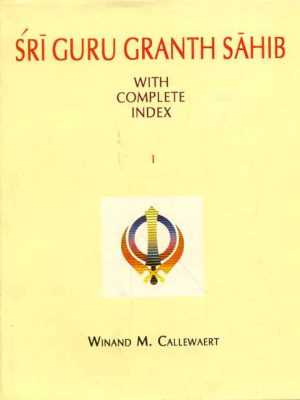-
₹99,000.00
-
-
-
-
Manusmrti, 10 Vols.: With the ‘Manubhasya’ of Medhatithi
Manusmrti, 10 Vols.: With the ‘Manubhasya’ of Medhatithi
Ganganatha Jha’s Mualti-volume Manusmrti, originally published by the University of Calcutta between 1920 and 1939 is as indicated by its subtitle “The Laws of Manu with the Bhasya of Medhatithi”, mainly an edition and translation of the Mula text together with the explanation of the most celebrated commentator. Medhatithi’s Manubhasya has been characterized by one of the leading scholars on Dharmasastra, J. Duncan M. Derrett, as a large repertory of opinion on the meaning of the “Smrti and on some fundamental questions of Dharma and Law.”
The present work is divided into three sets, i.e. Sanskrit Text (Mula), English Translation and Notes. These comprise of two, five and three volumes-in all the ten volumes. The first two volumes are devoted to (Mula) Sanskrit Text. The first consists of first six Adhyayas and the subsequent carries next six Adhyayas from Vii to XII and a detailed Index for both volumes. The next five volumes (Vol.3 to 7) belong to English Translation. The Vol.3 carries Adhyayas I and II, Vol.4 contains Adhyayas III and IV, Vol.5 has Adhyayas V to VII, Vol 6 has Adhyaya 8, and Vol.7 has last four Adhyayas (IX to XII). All volumes contain a detailed Index. The last three volumes (8 to 10 are devoted to detailed Notes conducive to understanding the subject of the Smrti even to an interested average reader. These belong to textual, explanation and comparative respectively. These contain much useful informations
₹25,000.00 -
₹15,000.00
The Naturalistic Tradition in Indian Thought
₹15,000.00 -
History of Civilizations of Central Asia: 5 Volumes in 6 Parts (Set of 6 Books)
The multi-volume History of Civilizations of Central Asia is the first attempt to present a comprehensive picture of this subject. The publication of this work falls well within UNESCO’s terms of reference since the underlying research was conducted by a distinguished international team of specialists which for many years laboured in harmony at the task of presenting to a wider public the civilization of this vast area located at the heart of the Eurasian continent. The volumes will reveal the cultures that flourished and vanished in this area, from the dawn of civilization to the present time. Only a few names, such as those of Samarkand, Bukhara or Khiva, are familiar to a wider public; eminent specialists, many of them native to the region, now lift the curtain to reveal a richer, more varied civilization. To a great extent, the history of the ancient and medieval world was shaped by the movements of peoples in this heartland of Eurasia, stretching from the Caspian Sea in the west to the borders of China proper in the east.
₹10,800.00 -
-
The Art of Indian Asia, 2 Vols.: Its Mythology and Transformation: Volume One: Text, Volume Two: Plates
The Art of Indian Asia, 2 Vols.: Its Mythology and Transformation: Volume One: Text, Volume Two: Plates
The present work is intended not as a handbook but as an introduction to its subject, to be read from beginning to end. Each section is preparation for the next. Chapter I, presenting as it does a brief historical outline of the transformations of Indian art as well as a key to the symbology of the forms, can be used as a guide during the first perusal of the pictures. For the reader then wishing to find quickly the several portions of text referring to any spefific group of monuments, a copious index has been supplied, together with textual references in the Description of Plates and cross-references in the footnotes. Marginal references to the Plates, furthermore, accompany the text. These should make possible an easy and rapid correlation of the materials of the two volumes.
The first two groups of Plates in the text volume illustrate, for the most part, the anthropological and comparative observations of the text. Included among them, however, are a few photographs that are indispensable to Dr. Zimmer’s argument but do not meet the aesthetic standard of the Plates volume. On the other hand, the final cluster of text Plates constitutes. an independent pictorial appendix, illustrating the miniature and Rajput art of the eleventh to nineteenth centuries A.D. Dr. Zimmer’s notes on this subject had not been developed beyond preliminary jottings, and could not be incorporated in any major section of the text. But since there is actually a rather special, very delicate, lyric quality about these paintings on palm leaf and paper, which sets them apart, somewhat from the tradition of the stone monuments, it is not inappropriate that they should be given a separate place.
₹8,000.00 -
Isvarasamhita (Set of 5 Vols.)
Isvarasamhita (Set of 5 Vols.)
Both Vaikhanasa and Pancaratra are very significant schools of ritual and philosophy that emerged as a direct result of Visnuism’s influence. The Isvarasamhita is an essential piece of literature for followers of the Pancaratra school of Visnuism.
Pancaratra is characterised by a more open and permissive approach, in contrast to Vaikhanasa, which has a character that is relatively archaic and relies more heavily on the Vedic tradition for its repertoire of mantras that are used in religious rites and ceremonies. Pancaratra’s repertoire of mantras can be found here. It has a text tradition that dates back around two thousand years, which has also been the primary basis for the Visistadvaita philosophy that was developed by Ramanuja (between the 11th and 12th centuries). Worship is performed in line with the instructions provided in one of the significant Pancaratra Samhitas at the vast majority of Vaisnava temples located in southern India, particularly in the state of Tamilnadu.
At the Narayanasvami temple in Melkote, a strict adherence to the Isvarasamhita can be seen throughout the daily puja ritual as well as during the many other types of religious celebrations that take place there. This is because the Isvarasamhita is an essential scripture of the Pancaratra School. Given that it is mentioned in Shri Yamunacarya’s Agama Pramanya, we may confidently place it somewhere between the 8th and 9th centuries at the very least. It is said to be a simpler and shorter version of the older sattvatasamhita of this school, which is the earliest available work of Pancaratra and is regarded as one of three ratnas, (Jewels), along with the Pauskara- and Jaya Samhitas. In other words, it is the simplest and shortest version of the older sattvatasamhita of this school. The Isvarasamhita contains a description of the rites, rituals, and ceremonies that take place (or ought to take place) at a Vaisnava temple. This description is spread out across 25 lengthy Adhyayas.
Palm leaf Because of its reputation for genuineness, the Narayanasvami temple in Melkote was the primary source for the Isvarasamhita manuscripts that were acquired. We have included attached to the text the gloss that was written by Alasimha Bhatta in the early 19th century. This gloss will be of assistance in understanding some terms that are difficult to understand or are sectarian in nature. The current researchers who are working on the philosophy, ritual, and iconography of Visnuism will find the English translation helpful, thus it has been supplied on the page facing them (to the right).
It should come as no surprise that the study of art cannot proceed without first acquiring a sufficient familiarity with ritual.
Author
V. Varadachari
₹6,000.00Isvarasamhita (Set of 5 Vols.)
₹6,000.00 -
-
Agni (2 Vols.) with 2 CDs: The Vedic Ritual of the Fire Altar
Agni (2 Vols.) with 2 CDs: The Vedic Ritual of the Fire Altar
A consideration of the role of the Agnicayana in the Vedic srauta tradition, its textual loci, traditional and contemporary interpretations of its origins and meaning, and an overview of the Nambudiri Vedic tradition are all included in the first book of Agni: The Vedic Ritual of the Fire Altar. The majority of the book is dedicated to a comprehensive account of the twelve-day performance that took place in 19875. This account was written in close collaboration with C.V. Somayajipad and M.Itti Ravi Nambudiri, and it is lavishly illustrated with tipped-in photographs that are predominantly coloured and almost entirely taken by Adelaide de Menil. There are various images, tables, and maps included inside the text. Both the original Devanagari text and an English translation of the mantras are provided. Archeology, the pre-Vedic Indian background, geometry, ritual vessels, music, Mudras, Mimamsa, a survey of Srauta traditions in recent times, the influence of Vedic ritual in the Homa traditions of Indonesia, Tibet, China, and Japan, and related topics are covered in the second volume, which was edited with the assistance of Pamela MacFarland. This volume contains contributions from an international galaxy of scholars on archaeology, the pre-Vedic Indian background There are also translations of the relevant Srauta Sutras of Baudhayana (together with Calanda’s text) and the Jaiminiya (with Bhavatrata’s commentary) as well as the Kausitaki Brahmana; and there is also a survey of the project along with an inventory of the films and tape recording that was made in 1975.
Author
Frits Stall
₹5,000.00



















